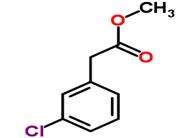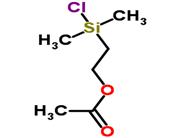Uses
Nickel acetate is used as a catalyst. It also is used as a dye mordant in textiles. Other applications are in electroplating nickel and as a sealer for anodizing aluminum.
Preparation
Nickel acetate is prepared by reacting nickel hydroxide or nickel carbonate with dilute acetic acid. The tetrahydrate is crystallized from solution. Ni(OH)2 + 2CH3COOH → (CH3COO)2Ni + 2H2O
NiCO3 + 2CH3COOH → (CH3COO)2Ni + CO2 + 2H2O
On heating, the solution hydrolyzes depositing nickel hydroxide.
Description
Nickel (II) acetate (Ni (CH3 COO)2 ) is an inorganic compound of nickel and acetic acid. This inorganic compound is usually found as the tetrahydrate. It is used for electroplating.
It can be made by reacting nickel or nickel (II) carbonate with acetic acid.
Ni + 2 CH3 COOH → C4 H6 NiO4 + H2
NiCO3 + 2 CH3 COOH → C4 H6 NiO4 + CO2 + H2 O
The green tetrahydrate has been determined by X-ray crystallography to be octahedral about the central nickel atom, coordinated by four water molecules and two acetate fragments.It may be dehydrated in vacuo, by reaction with acetic anhydride,or by heat.
Chemical Properties
Green, monoclinic crystals; effloresces somewhat in air.Soluble in water and alcohol.
Uses
Textiles (mordant), catalyst.
General Description
Dull green odorless solid. Sinks and mixes slowly with water.
Air & Water Reactions
Water soluble.
Reactivity Profile
Nickelous acetate is a green, crystalline material, mildly toxic and carcinogenic. Combustible when exposed to heat or flame. When heated to decomposition Nickelous acetate emits acrid smoke and irritating fumes [Lewis, 3rd ed., 1993, p. 909].
Hazard
Toxic by ingestion, a carcinogen (OSHA).
Health Hazard
Inhalation causes irritation of nose and throat. Ingestion causes vomiting. Contact with eyes causes irritation. May cause dermatitis in contact with skin.
Safety Profile
Confirmed carcinogen with experimental neoplastigenic and tumorigenic data. Poison by ingestion, intraperitoneal, and subcutaneous routes. Experimental reproductive effects. Mutation data reported. When heated to decomposition it emits irritating fumes. See also NICKEL COMPOUNDS.
Safety
Nickel salts are carcinogenic and irritate the skin.

 China
China







